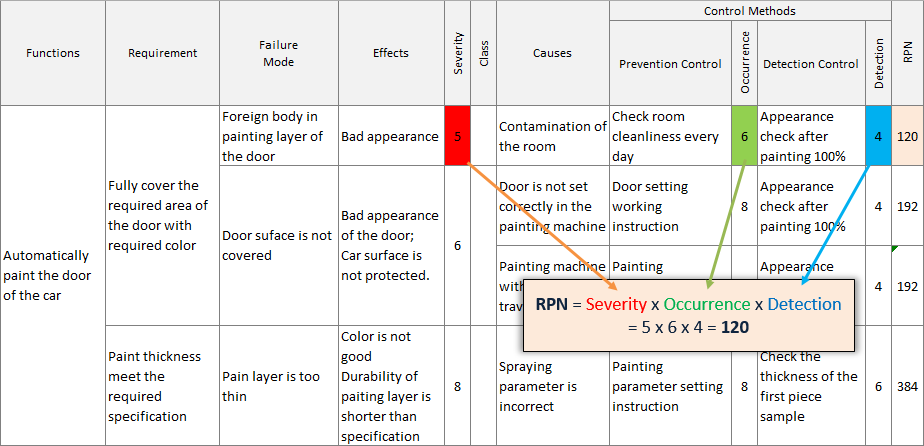

Examples of failure effects include overheating, noise, abnormal shutdown, or user injury. List all failure modes per function and consider the ultimate effect(s) of each failure mode. It’s important to consider that failure modes in one component can induce failure in others.

The first FMEA step is to analyze functional requirements and their effects and identify all potential areas of failure. Step 1: Identify potential failures and effects Each step is described in greater detail below. The five most basic steps when conducting FMEA include identifying potential failures and effects, determining the severity of each, gauging the likelihood of each failure occurring, failure detection, and assigning a risk priority number. What are the 5 steps of the FMEA process? Ideally, effective FMEA begins during the earliest conceptual stages of design and continues throughout the life of the product or service. It’s also used for quality control by assessing ongoing operations and processes. For example, FMEA is used during design to prevent failures before systems are built. The overall goal of FMEA is to provide insight into what actions need to be taken to eliminate or reduce failures, starting with the highest-priority ones.įailure modes and effects analysis is also used for continuous improvement. Detectability refers to the degree of difficulty in detecting failures. Frequency describes how often failures can occur. Severity describes the seriousness of failure consequences. "Effects analysis" refers to studying the consequences of those failures.įailures are prioritized according to how severe their consequences are, how frequently they occur, and how easily they can be detected. Failures are any potential or actual errors or defects. "Failure modes" refers to the ways, or modes, in which something might fail within a process. It assesses the relative impact of different failures in order to identify the parts of the process that need to change.įMEA is also referred to as potential failure modes and effects analysis, or failure modes, effects and criticality analysis (FMECA). Specifications and alarms can be assigned to the calculated risk factor to upscale when needed.FMEA stands for failure mode and effects analysis and is a step-by-step risk management, process analysis tool for identifying where and how failures might occur in a design, manufacturing, or assembly process for a product or service. In our analysis set, we now have the Risk Priority Number for every individual case or potential failure mode. option.lookup_ can be used for a new Numeric (calculation) in the same Analysis Set. Define a filter on the risk category, to scope the options to either Frequency or Severity.įinally, the function. When this master data is present, we can add fields to select the Frequency and Severity in our analysis set(s). In AlisQI the factors can be assigned and administrated in a Selection List:
#Risk probability number rpn full
This calculation will provide us with a value that we can interpret as the Risk Priority number, with predefined thresholds for low, medium or high risks.īecause the setup of this in AlisQI fully relies on the form editor and expression engine, you have full control over the methodology and threshold levels. In case of a FMEA approach, you can also include the probability of failure detection as the third leg of this calculation.


 0 kommentar(er)
0 kommentar(er)
